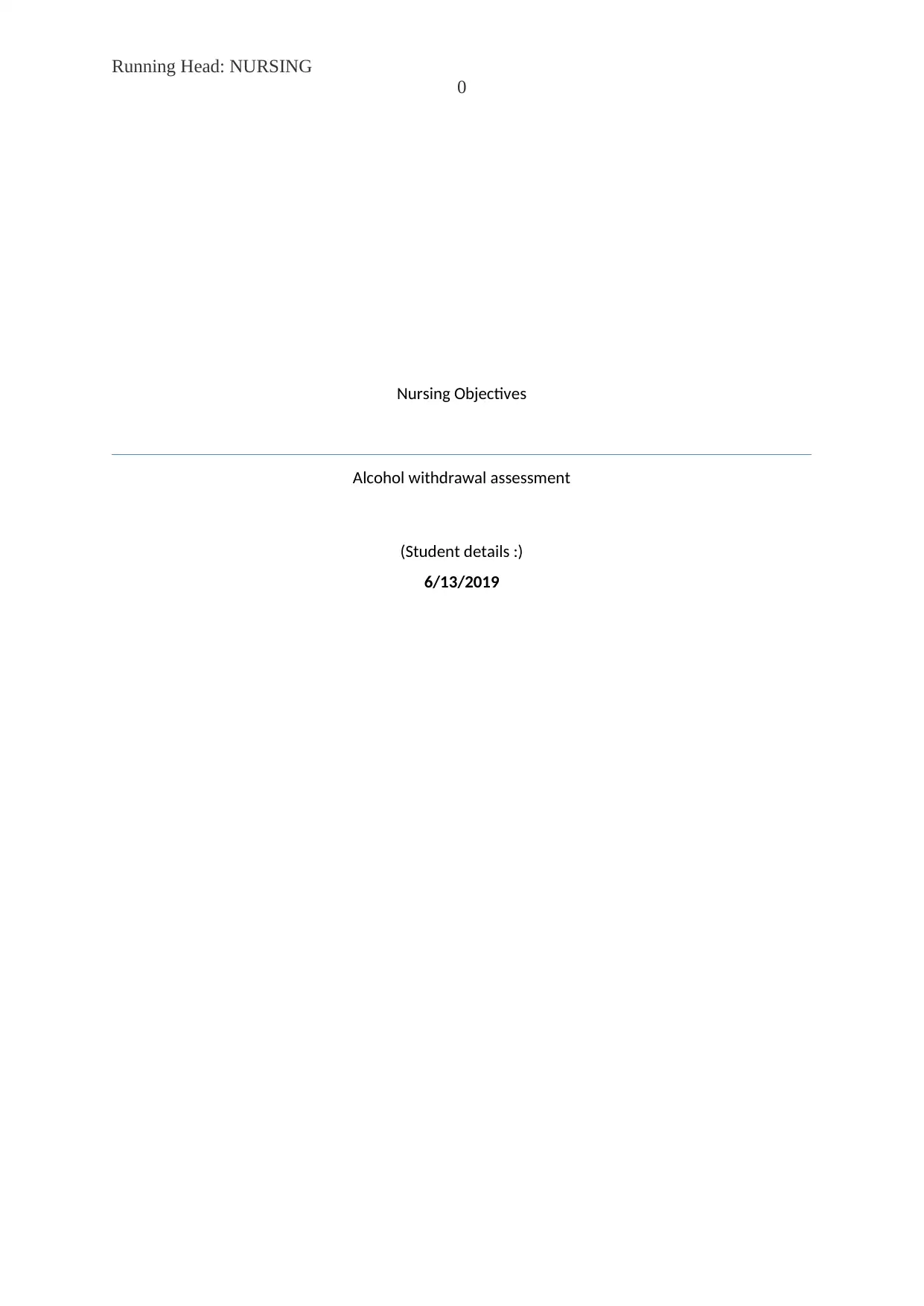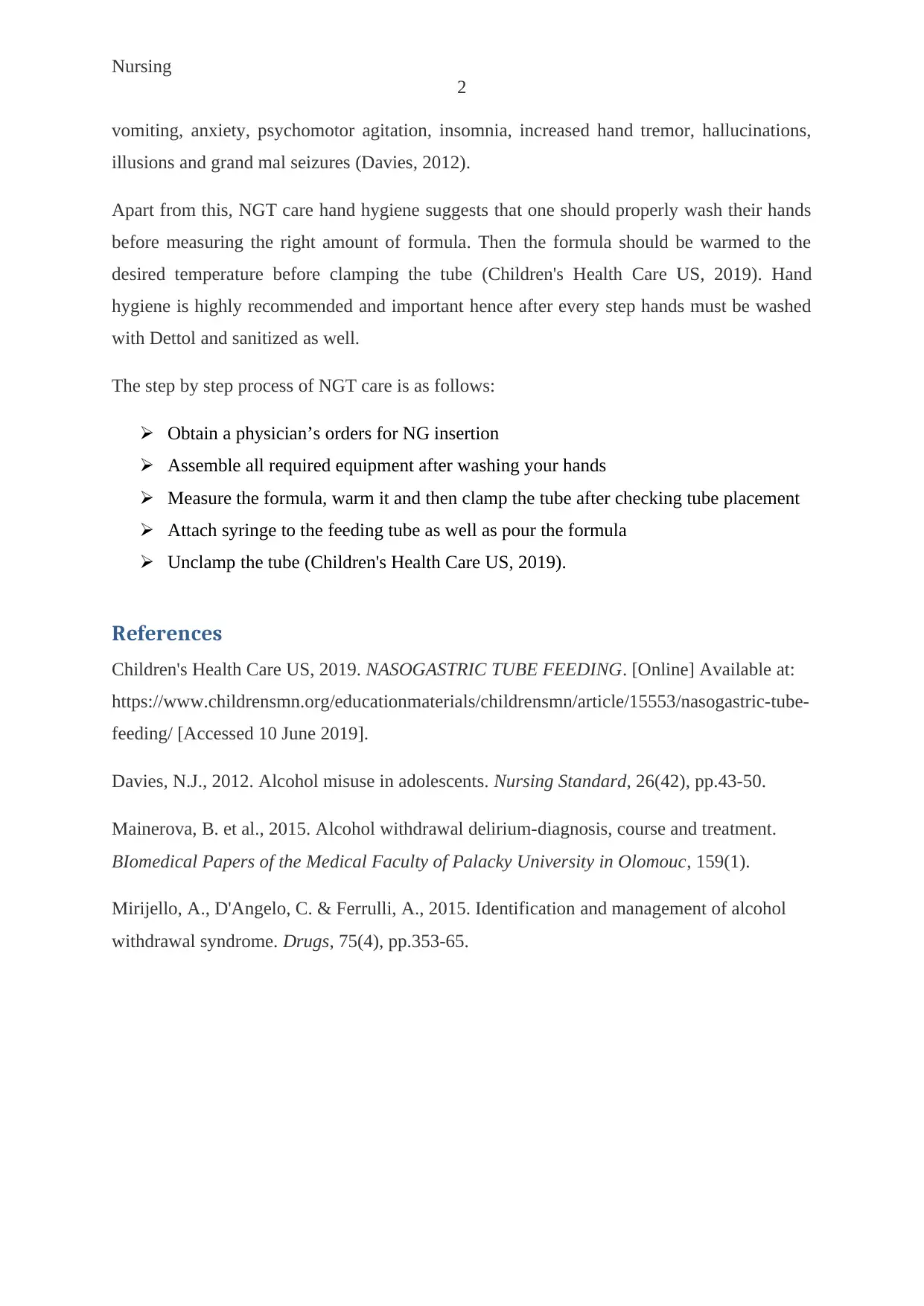Nursing 1: Alcohol Withdrawal Assessment and NGT Care
VerifiedAdded on 2022/12/29
|3
|740
|51
Report
AI Summary
This report provides a comprehensive overview of alcohol withdrawal assessment (AWA) and nasogastric tube (NGT) care, crucial topics in nursing. It details the three stages of alcohol withdrawal: mild, moderate, and severe, outlining the associated symptoms and timelines. The report emphasizes the importance of initial diagnosis, treatment of alcohol dependence, and assessment of organ damage. It also discusses the administration of multivitamins, electrolyte replacements (potassium, glucose, magnesium, and phosphate), and medications such as benzodiazepines to manage withdrawal symptoms. The report highlights the use of the CIWA-Ar score for medication management, the common side effects of alcohol withdrawal, and detailed NGT care procedures, including hand hygiene, formula preparation, and tube insertion techniques. References from Children's Health Care US, Davies (2012), Mainerova et al. (2015), and Mirijello et al. (2015) support the information presented.
1 out of 3




![[object Object]](/_next/static/media/star-bottom.7253800d.svg)